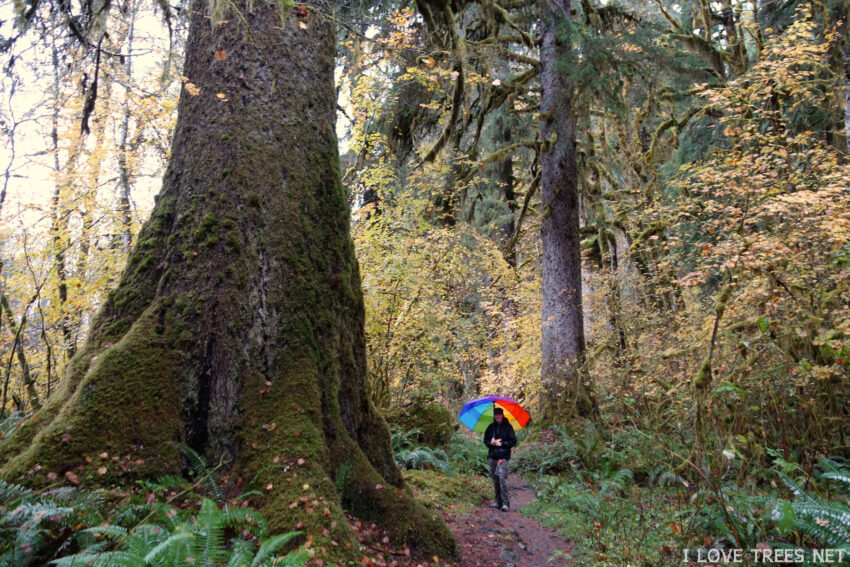I’ve been to Olympic National Park many times. It’s one of those places I keep returning too over and over again. I absolutely love the huge old sitka spruce and western red cedar trees set in the lush pacific northwest rainforest. It is a land of emerald wonder.
Sitka spruce is my second favorite tree. There’s something special about their pale gray cylindrical trunks, their unique scaly bark, their clumpy dark green foliage, the elegant flare of their bases. I love walking through a sitka spruce forest. The gracefully spaced columns rise high above a sea of green ferns and plants. Wild big leaf maple trees appear wearing thick robes of hanging moss; their giant golden leaves clutter the ground in fall. Dark brown Douglas-fir trunks grow straight and high up into the clouds.
All of the trees in these remnants of forest are old. Only those with the hardest hearts can avoid feeling sad or angry that most of this forest has been cut down. When you realize that you might not be seeing the biggest or oldest of these trees and that the area is so small compared to what it was, it’s impossible not to feel cheated. Why wouldn’t we leave more? What kind of person could kill trees that are so magnificent? Sure, they’ll grow back in a thousand years time, but even if we could wait that long, the forest is never the same. The trees aren’t even the same. When you take the biggest and the best trees, you are left with the runts. The genetic makeup is weak. So often we look upon inferior forests that we hardly know what they once were. It’s all being lost to history, merely existing in words and pictures that are not equal to the actual experience of seeing giants with your own eyes, touching the trunks, smelling the aroma of the forest.
I spend most of my time on the Hoh Rainforest trails and the Quinault trails, and I’ve explored most of the area. I’ve made several pilgrimages to “One Square Inch,” the place of silence from Gordon Hempton’s book One Square Inch of Silence. The author believes that silence is endangered, as do I. We can’t even go to our national parks to find quiet. Every time I hear an airplane overhead I’m disturbed from my retreat. I would add that people seem addicted to noise. When I exit the forest I am bombarded with people talking and shouting, kids screaming, machines roaring, music blaring, and so on. No one seems to go to the forest to get away from their noisy routines, to find the peace and quiet it can offer.
![]() About the Author:
About the Author:
Sue Cag is a musician, artist, writer, photographer, and nature preservationist.
All photos and video by Sue Cag. All Rights Reserved. Photos and video may not be used without permission.


